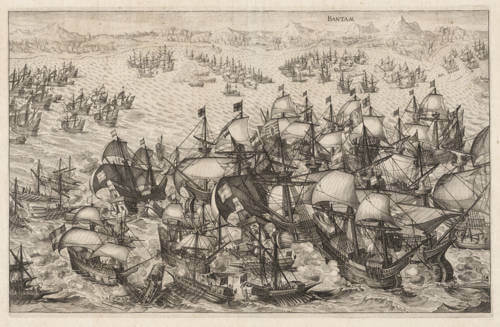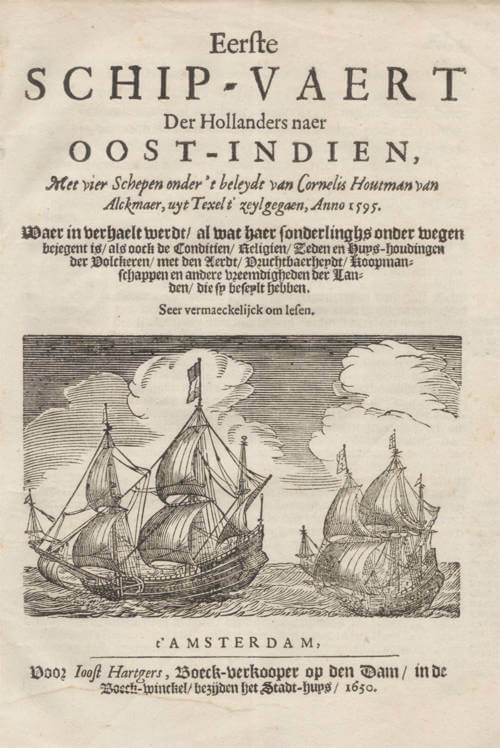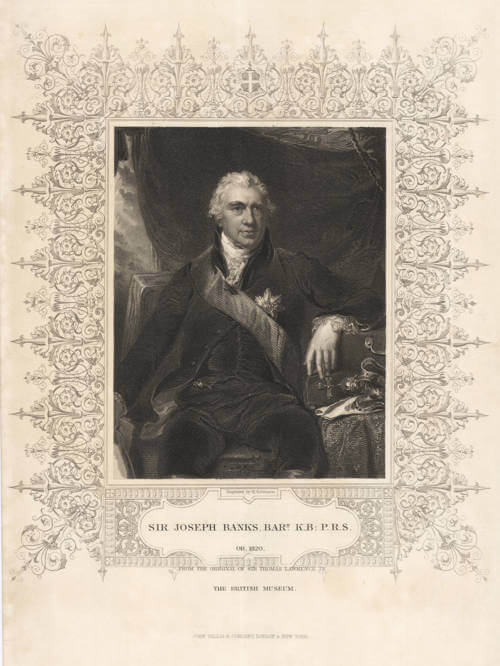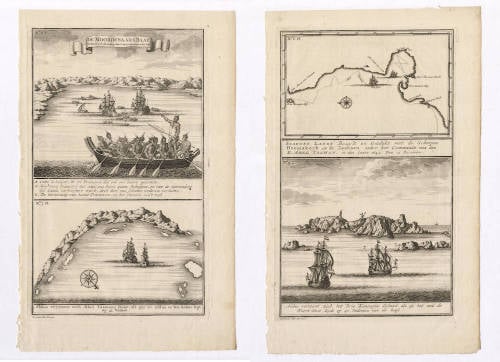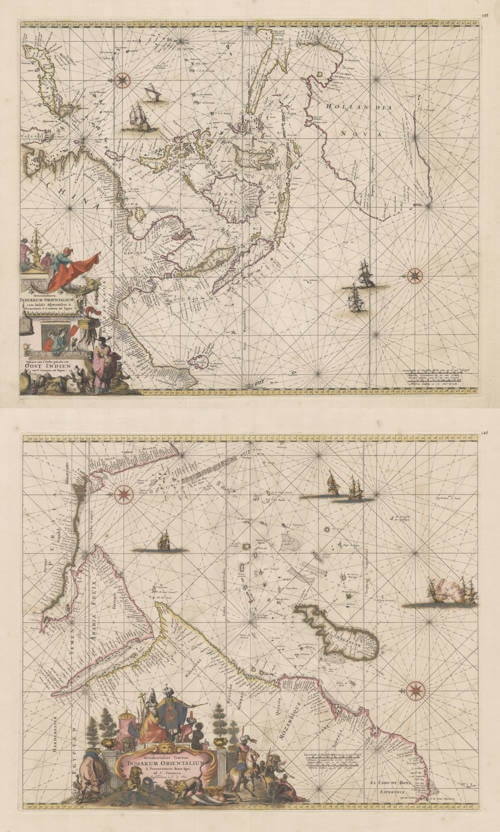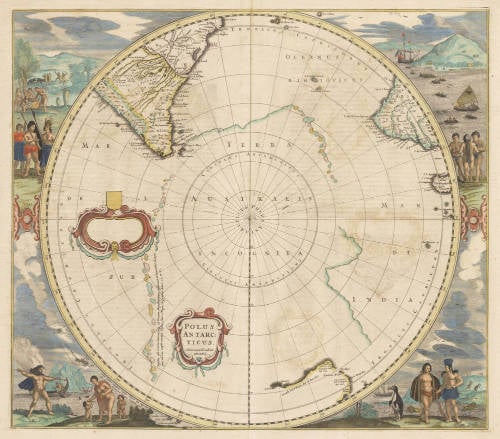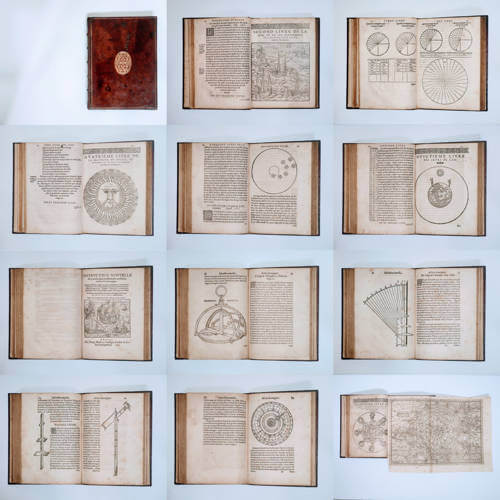Leen Helmink Antique Maps
Antique map of the Naval Battle of Bantam by Jan Orlers
Stock number: 19761
Zoom ImageCartographer(s)
Jan Janszoon Orlers (biography)
Title
Bantam
First Published
Amsterdam, 1610
Technique
Condition
mint
Price
$ 750.00
(Convert price to other currencies)
Description
The famous print of the Naval battle of Bantam, a decisive Dutch victory over the Portuguese in the power struggle for the spice trade.
From Jan Orlers' lauding of the Princes of Orange's political and battlefield successes in the 80 year Dutch war of independence against the Spanish Empire.
The print is the only collectable version of an unobtainable large broadsheet of the naval battle, first issued in 1603, which has survived in only four copies of a second state of 1608.
The print famously depicts the yacht Duyfken (Little Dove, then under Willem Corneliszoon Schouten), armed with only six cannons. The Duyfken returned to the Netherlands in February 1603 bringing news of the victory, which generated enormous enthusiasm and prompted the creation and wide distribution of this broadsheet. Purchased by the newly founded Dutch East India Company (VOC), the vessel sailed again for Asia in December 1603. Owing to its size, shallow draught, and manoeuvrability, it was especially suited to speed and exploration. In 1606, under Willem Janszoon, it undertook a pioneering voyage along the south-western coast of New Guinea, inadvertently making the first recorded European contact with Australia by charting parts of the west coast of Cape York Peninsula, believed at the time to be part of New Guinea.
Rarity
No copy in Australian institutions.
Jan Janszoon Orlers (1570-1646)
Jan Janszoon Orlers was a prominent Dutch author, historian, and civic official during the Dutch Golden Age. Born in Leiden in 1570, Orlers lived through a transformative period in Dutch history, marked by the Dutch Republic’s fight for independence from Spanish rule and its rise as a global cultural and economic power. He is best remembered for his historical and biographical writings, which provide valuable insights into the society and key figures of his time.
Orlers was deeply involved in the civic life of Leiden, serving as burgomaster (mayor) and holding various other municipal positions throughout his career. He was also an active participant in the city’s cultural and intellectual activities, which flourished during the era. His role as a civic leader intertwined with his work as a writer, as he sought to document and celebrate the achievements of the Dutch Republic and its citizens.
Among Orlers’ notable works was Wilhelm en Maurits van Nassau, Princen van Orangien, Haer Leven en Bedrijf (Lives and Deeds of William and Maurice of Nassau, Princes of Orange), a biographical account of the leadership of William the Silent and his son Maurice during the Eighty Years’ War. Published in 1610, the work highlighted the contributions of the House of Orange-Nassau in the Dutch struggle for independence. It combined historical narrative with a patriotic celebration of their military and political successes, reinforcing their status as key figures in the Dutch Golden Age.
Orlers also wrote Beschrijvingen der Stad Leyden (Descriptions of the City of Leiden), published in 1614, which chronicled the history, architecture, and notable citizens of Leiden. His 1641 edition of Beschrijvinge der Stadt Leyden included biographical sketches of significant figures, such as Rembrandt van Rijn, providing some of the earliest records of the renowned artist’s life. These works not only reflected Orlers’ civic pride but also served as valuable historical sources.
Jan Janszoon Orlers passed away in 1646, leaving behind a legacy as a chronicler of Dutch Renaissance life. His works, blending civic pride and historical narrative, remain important records of the Dutch Republic’s cultural and political achievements during one of its most dynamic eras.
Related Categories
Related Items
